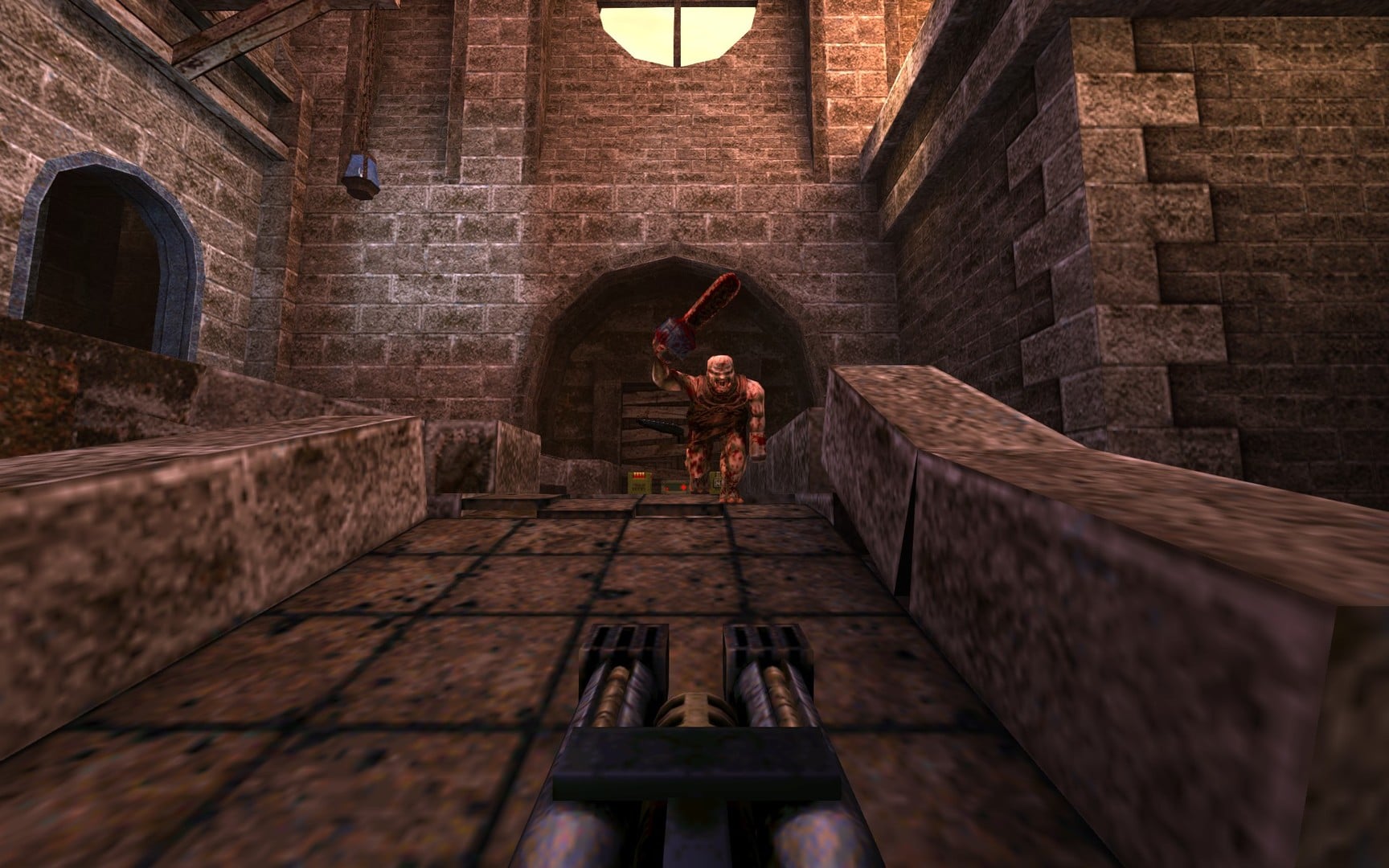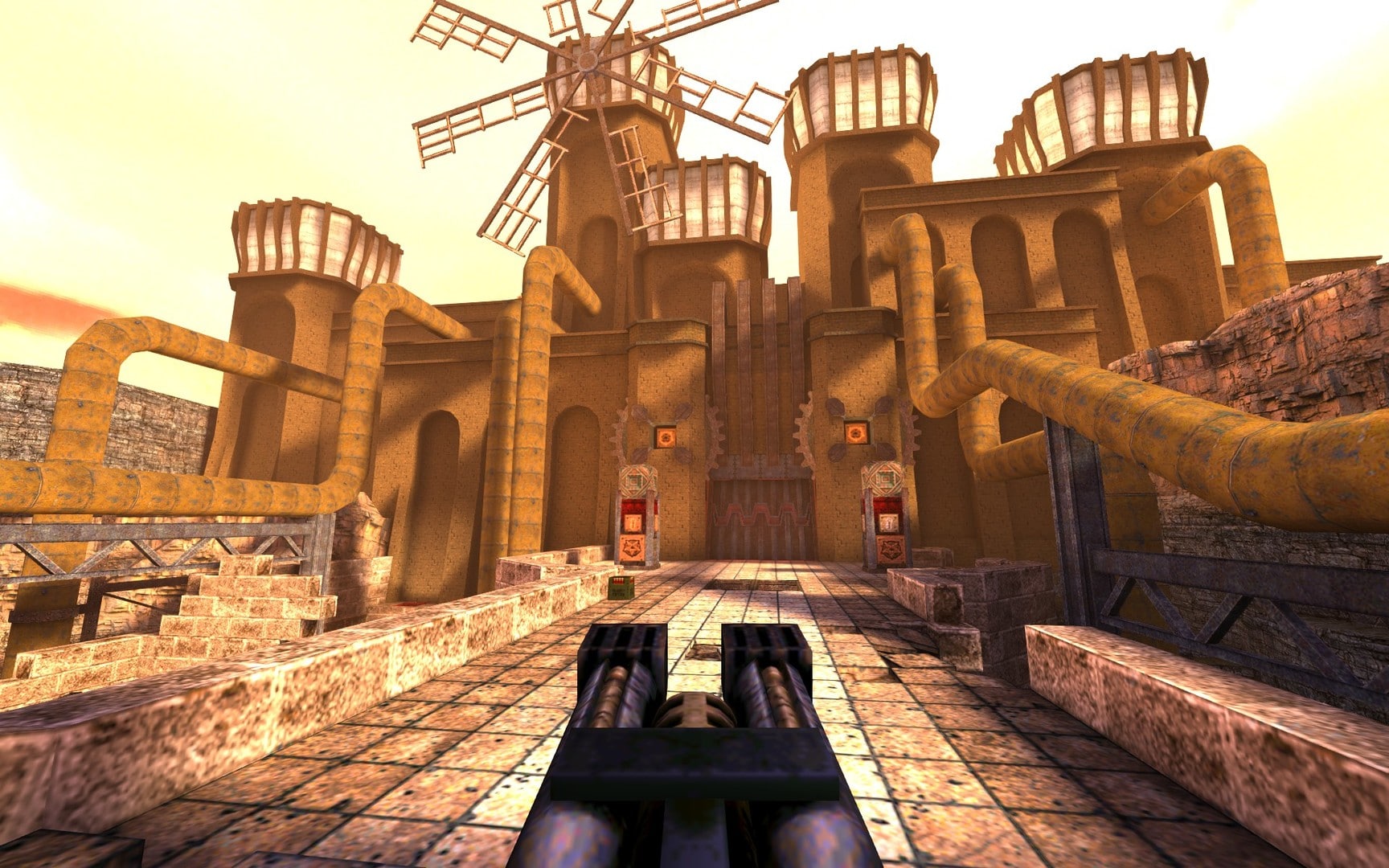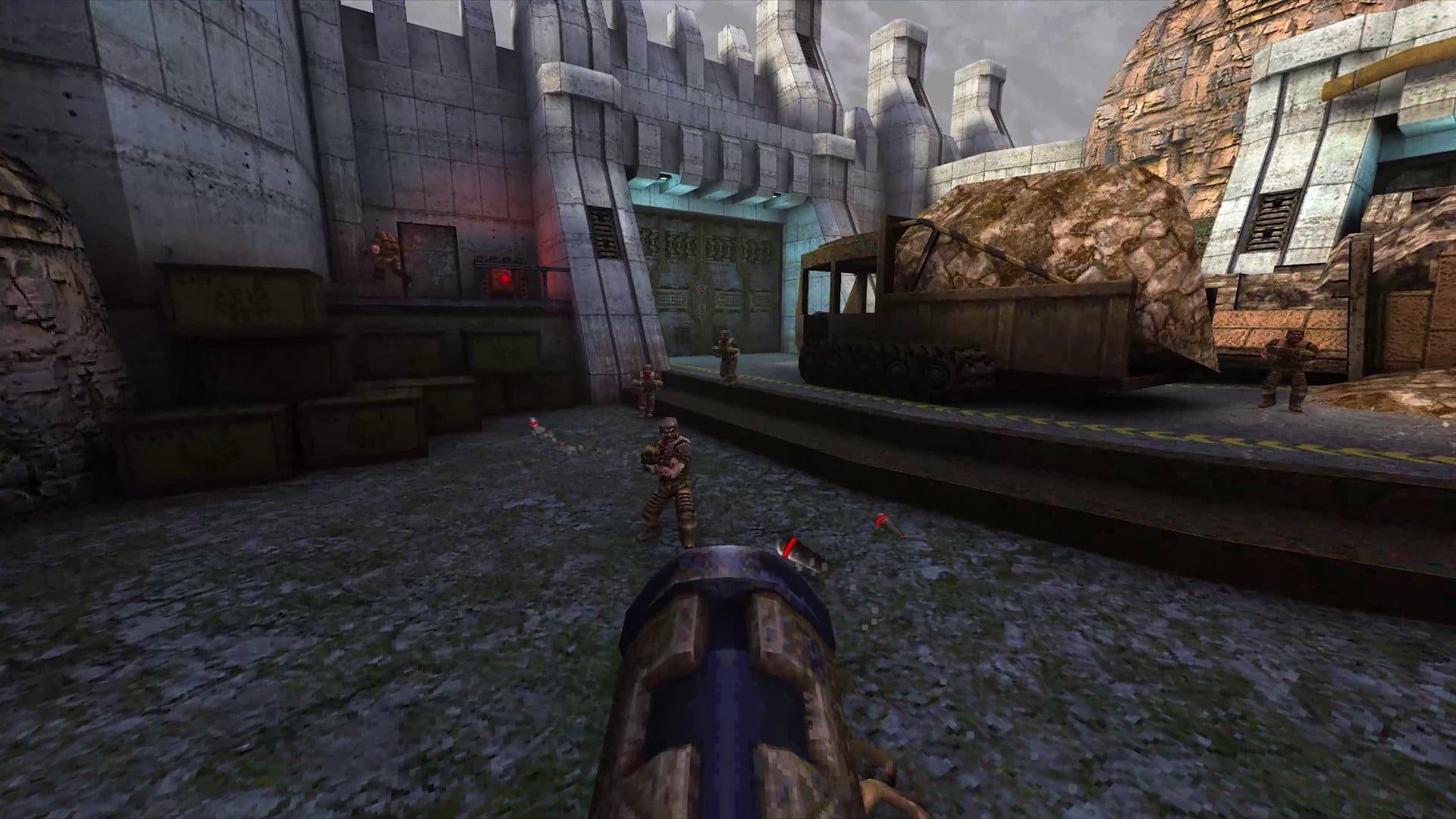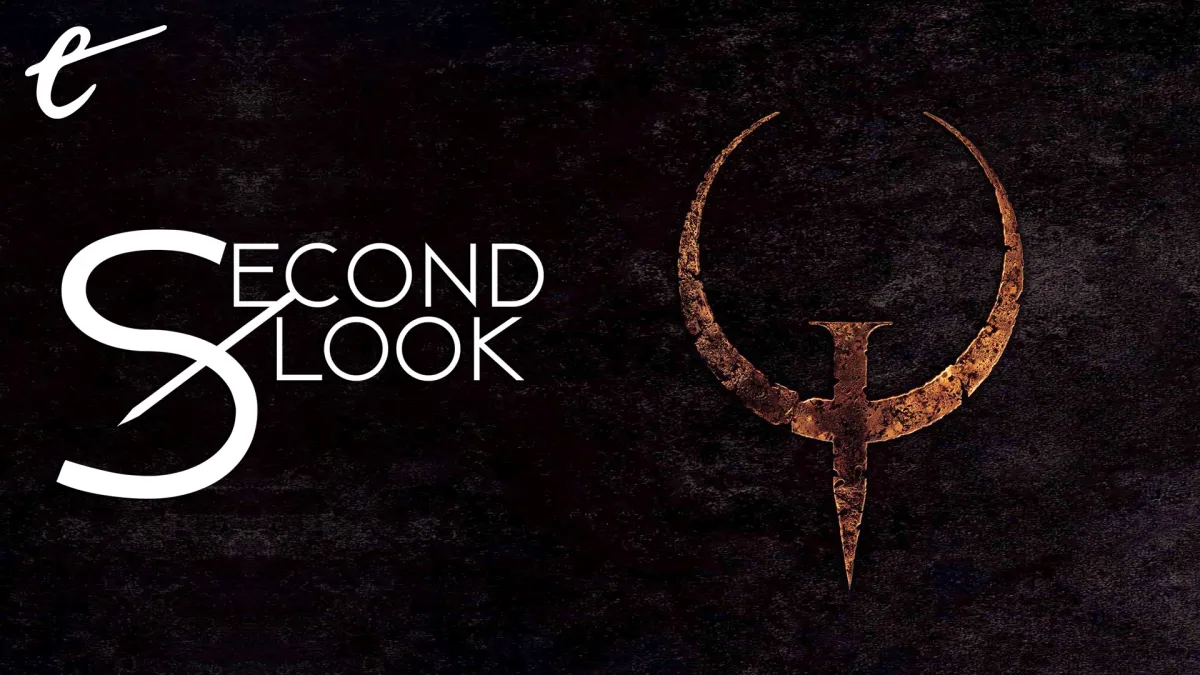Quake is simultaneously one of the most influential yet oddly rarely discussed games in id Software’s library. As one of the first truly 3D games, released all the way back in 1996, it remains as foundational for PC gaming as Super Mario 64 was for console gaming. It’s also a rare gothic fantasy FPS that blends Lovecraftian nightmares with Clive Barker-esque necrotic monstrosities built of twisted metal and gnarled flesh. The title simultaneously helped give birth to machinima and fostered classic mod projects like the original Team Fortress. Countless engines are built upon Quake’s code, not least being Valve’s Source engines.
Yet despite all its countless innovative achievements, you’re more likely to hear about its younger siblings Quake II, Quake III Arena, and Quake Champions. Quake II is shinier — it even has ray tracing added now all these years later — and Quake III boasts far greater popularity when it comes to multiplayer, which was subsequently echoed in Champions. There’s also Quake 4, but that’s a Silent Hill: Homecoming-tier sequel for another day.
Yet out of all these varied games, the original Quake has stuck it out all these years. Fans have kept the lone game and its two expansions alive with countless new levels that stretch the source code to the limit. It’s one of the first games ported whenever a console gets cracked open by homebrewers. Obviously someone’s gonna stick Doom on everything, but why bother with Quake? It sets the stage for modern 3D games, but being historically important doesn’t guarantee you’re great to play in the present.
Fortunately, relevance isn’t a problem for Quake.

It’s astonishing how well Quake holds up. For a game with a storied, tumultuous history, its pivot from more of a melee-focused affair to a traditional arena shooter results in a remarkably well-rounded experience. Combat is simple yet deep — every enemy is deadly at both close range and from afar.
Take for instance the iconic chainsaw-toting grenadier. He’s like Leatherface on steroids, demanding constant awareness of your environment and your evasion options to never get within his grasp nor in the splash zone of his grenades. Just this one enemy alters a scenario instantly, making every cramped hallway a potential killbox if you aren’t quick, and he forces you to fully harness open environments to have any breathing room.
The bastard’s demolition-slasher-villain antics can be countered with as many options as the problems he presents. Your trusty shotgun’s hitscan blasts are guaranteed to hit at any reasonable range, but you have to land multiple shots while he sends you frantically dancing. Tout the super shotgun up close, and you might stun him for a second. You can swiftly counter him with the nailgun, but its ballistic nature requires you stay on target while diving around. Grenades and rockets are devastating in a delightful bit of karma, but they can just as easily harm you if you aren’t careful.

In the heat of the moment, it’s all beautifully instinctual. You aren’t trying to memorize what color gun is most effective — you know each piece of your arsenal as well as the opposition because they’re as iconically defined as the ghastly beasts out of Castlevania. Tortured knights that have wide close range and narrow electrical blasts. Soaring hydras that spout acid as they fly above the grasp of your grenades. Fast fiends that are like heat-seeking clouds of teeth. Towering behemoths with slow but devastating blasts so powerful they’re first introduced as a boss.
Therein lies another key aspect to Quake’s brilliance: challenge is escalated by greater dangers, not arbitrarily stacked odds. It might sound odd to consider, but Quake is easily the most puzzle-like of id’s original library. Once you’ve learned the ins and outs of Quake, the risk-reward is no less exciting than before — you just understand the rules. The progression is highly evocative of Portal, dedicating whole chapters to teaching you the fundamentals while later sections present levels that demand you think harder than you shoot.
Power-ups are strategically placed. Secrets are at times their own additional challenge and then become choices for your given run once you’ve mastered them. Every facet is deliberate, crafted with masterful precision. It’s fitting that Nine Inch Nails’ Trent Reznor crafted the game’s score, as the tempo of the level design is as tightly wound. A death trap. A maze. A deathmatch against a seemingly endless horde. A platforming castle like out of a twisted Mario fever dream. Despite only being able to shoot, jump, and smash your face into buttons on walls, the depth of scenario design puts some of the biggest modern set pieces to shame.

It’s this expert craftsmanship that keeps Quake so vibrantly relevant to its staunchest fans. These are levels made out of crude 3D blocks and enemies with animations so limited you can almost count the frames. Any lighting besides your gunshots is pre-baked and static. That Quake retains such beautiful art direction and soundscape is as much a triumph as the brilliant game design rippling across every encounter. That is — until you reach the final quarter of the main campaign.
Quake’s development was infamously a struggle. It wasn’t long afterwards that several folks associated with the project went their separate ways, and you can feel that tension once you wrap up the third chapter. The last quarter of Quake is far more like what the average gamer might expect of a shooter from this era — brutal, a tad cruel at times, and far more simplistic. The final boss stage is frankly so simultaneously tedious and dull that you’d be forgiven for giving up on it. Thankfully, id’s recent remaster includes not only the more satisfying expansion packs to conclude your official journey, but numerous fan levels greenlit by the original creators as “official mods.”
That’s the beauty of Quake. Even if its origins were tumultuous and the popular focus shifted to its siblings, it persists evermore. With brilliantly accessible tools like Trenchbroom, it’s never been easier to build upon id Software’s first true 3D game. I’m serious — give it a whirl, because it’s as close to MS Paint as game development gets. There’s a passionate fanbase that was primed for this resurgence, with an immense backlog of brilliant custom levels, modes, total conversions, and more. Plus, as stated, it’ll run on damn near anything. I’ll never cease to be amazed by id’s strangest, moodiest progeny, and I hope I never do. It’s undeniable: Quake is eternal.






Published: Aug 26, 2021 11:00 am